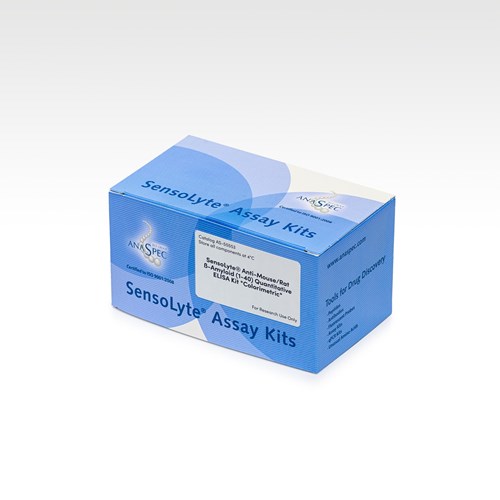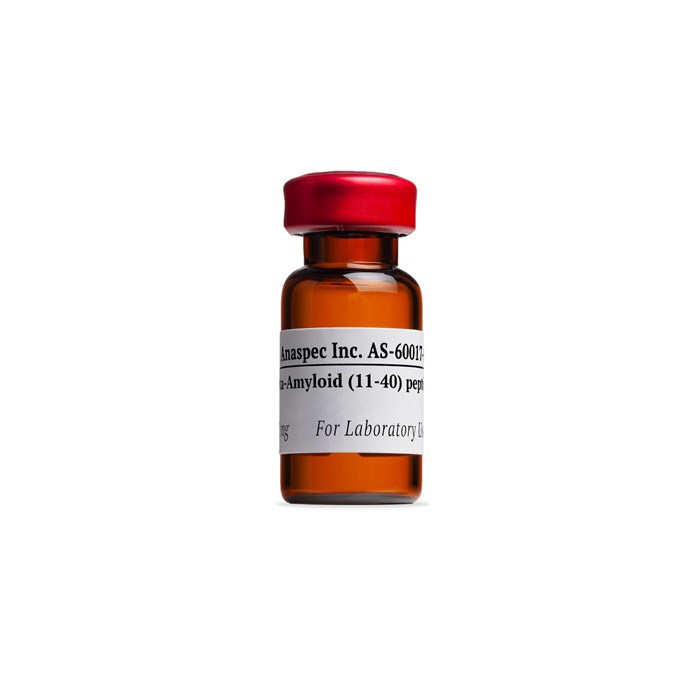Beta-Amyloid (11-40) - 1 mg
- Cat.Number : AS-60017-1-
- Manufacturer Ref. :
-
Availability :
In stock
Alternative choices
Post-mortem Alzheimer’s diseased brain specimens reveal significant levels of Aß (11-40/42) within insoluble amyloid pools. The ß-secretase enzyme or ß-amyloid precursor protein-cleaving enzyme (BACE) generates the N terminus of Aß, ultimately leading to the production of full-length Aß (1-40/42) or truncated Aß (11-40/42). The abundance of Aß (11-40/42) produced by BACE suggests that their roles in AD pathogenesis may be important.
Pyroglutamyl (pGlu) peptides may spontaneously form when either Glutamine (Q) or Glutamic acid (E) is located at the sequence N-terminus. The conversion of Q or E to pGlu is a natural occurrence and in general it is believed that the hydrophobic γ-lactam ring of pGlu may play a role in peptide stability against gastrointestinal proteases. Pyroglutamyl peptides are therefore considered a normal subset of such peptides and are included as part of the peptide purity during HPLC analysis.
Specifications
| Chemistry | |
| Sequence one letter code |
|
|---|---|
| Sequence three letter code |
|
| Modification | |
| Conjugation |
|
| Quantity & Purity | |
| Purity |
|
| Storage & stability | |
| Form |
|
| Storage Conditions |
|
| Activity | |
| Biomarker Target | |
| Research Area | |
| Sub-category Research Area | |
| Usage |
|
| Source | |
| Source / Species |
|
| Codes | |
| Code Nacres |
|
You may also be interested in the following product(s)



